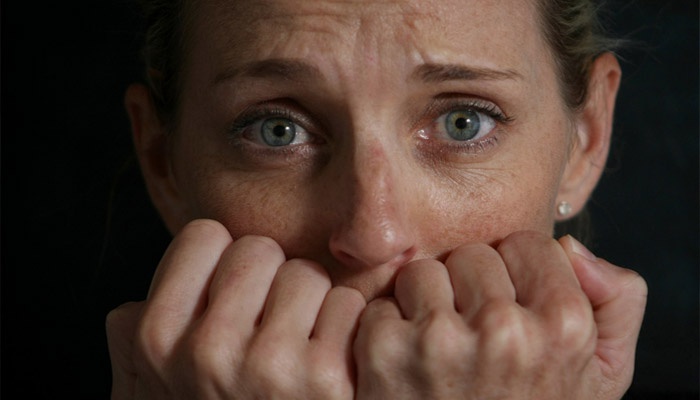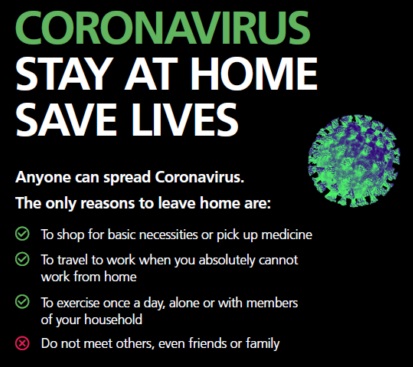Content
- What is a mental disorder
- Symptoms and Signs of Mental Disorders
- The main causes of diseases in women and men
- What are mental disorders?
- Which doctor should i contact for treatment
Mental disorders are invisible to the naked eye, and therefore very insidious. They significantly complicate a person’s life when he does not suspect a problem. Specialists studying this aspect of a limitless human essence argue that many of us have mental disorders, but does this mean that every second inhabitant of our planet needs to be treated? How to understand that a person is really sick, and he needs qualified help? You will receive answers to these and many other questions by reading the subsequent sections of the article..
What is a mental disorder
The concept of “mental disorder” covers a wide range of deviations of a person’s mental state from the norm. The internal health problems in question should not be taken as a negative manifestation of the negative side of the human person. Like any physical illness, a mental disorder is a violation of the processes and mechanisms of perception of reality, due to which certain difficulties are created. People faced with such problems do not adapt well to the real conditions of life and do not always correctly interpret what is happening.
Symptoms and Signs of Mental Disorders
Characteristic manifestations of mental deviation include behavioral / mood / thinking disorders that go beyond generally accepted cultural norms and beliefs. As a rule, all the symptoms are dictated by a depressed mental state. In this case, a person loses the ability to fully perform the usual social functions. The general spectrum of symptoms can be divided into several groups:
- physical – pain in various parts of the body, insomnia;
- cognitive – difficulties in clear thinking, impaired memory, unjustified pathological beliefs;
- perceptual – conditions in which the patient notices phenomena that other people do not notice (sounds, movement of objects, etc.);
- emotional – a sudden feeling of anxiety, sadness, fear;
- behavioral – unjustified aggression, inability to perform basic self-care actions, abuse of mentally active drugs.

The main causes of diseases in women and men
The etiology of this category of diseases is not fully understood, therefore, modern medicine cannot clearly describe the mechanisms that cause mental disorders. Nevertheless, a number of reasons can be distinguished, the connection of which with spiritual deviations is scientifically proven:
- stressful life conditions;
- difficult family circumstances;
- brain disease;
- hereditary factors;
- genetic predisposition;
- medical problems.
In addition, experts identify a number of special cases, which are specific deviations, conditions or incidents, against the background of which serious mental disorders develop. The factors that will be discussed are often found in everyday life, and therefore can lead to poor mental health of people in the most unforeseen situations..
Alcoholism
The systematic abuse of alcohol often leads to mental disorders. The body of a person suffering from chronic alcoholism constantly contains a large number of decay products of ethyl alcohol, which cause serious changes in thinking, behavior and mood. In this regard, dangerous mental disorders occur, among which:
- Psychosis. Mental disorder due to metabolic disturbances in the brain. The toxic effect of ethyl alcohol overshadows the patient’s mind, but the consequences appear only a few days after cessation of use. A person is seized with a feeling of fear or even a mania of persecution. In addition, the patient may have all kinds of obsessions associated with the fact that someone wants to cause him physical or moral damage.
- Delirium tremens. A common post-alcoholic mental disorder that occurs due to profound metabolic disturbances in all organs and systems of the human body. Delirium tremens is manifested in sleep disorders and convulsive seizures. The listed phenomena, as a rule, appear 70-90 hours after the cessation of alcohol consumption. The patient manifests sudden changes in mood from carefree fun to terrible anxiety.
- Rave. The mental disorder, called delirium, is expressed in the appearance in the patient of unshakable judgments and conclusions that do not correspond to objective reality. In a state of delirium, a person is disturbed by sleep and photophobia appears. The boundaries between sleep and reality become blurred, the patient begins to confuse one with the other.
- Hallucinations – vivid ideas, pathologically brought to the point of perception of real objects. It begins to seem to the patient that the people around him and objects are swaying, spinning, or even falling. The feeling of the passage of time is distorted.
Brain injuries
Upon receiving mechanical brain injuries, a person can develop a whole complex of serious mental disorders. As a result of damage to the nerve centers, complex processes are triggered, leading to clouding of consciousness. After such cases, the following disorders / conditions / diseases often occur:
- Twilight states. It is noted, as a rule, in the evening hours. The victim becomes drowsy, delirium appears. In some cases, a person can plunge into a state similar to a stupor. The patient’s consciousness is filled with all kinds of excitement patterns that can cause the corresponding reactions: from psychomotor disorder to brutal affect.
- Delirium. A serious mental disorder in which a person has visual hallucinations. So, for example, a person injured in a car accident can see moving vehicles, groups of people and other objects associated with the roadway. Mental disorders immerse the patient in a state of fear or anxiety.
- Oneyroid. A rare form of mental disorder in violation of the nerve centers of the brain. It is expressed in immobility and light sleepiness. For some time, the patient may be randomly excited, and then again freeze without movement.
Somatic diseases
Against the background of somatic diseases, the human psyche suffers very, very seriously. There are violations that are almost impossible to get rid of. The following is a list of mental disorders that medicine considers the most common for somatic disorders:
- Asthenic neurosis-like condition. A mental disorder in which a person manifests hyperactivity and talkativeness. The patient systematically experiences phobic disorders, often falls into short-term depression. Fears, as a rule, have clear outlines and do not change.
- Korsakovsky syndrome. A disease that is a combination of a memory disorder with respect to events, a disorientation in space / terrain and the appearance of false memories. A serious mental disorder that is not amenable to treatment by methods known to medicine. The patient constantly forgets about the events that just happened, often repeats the same questions.
- Dementia A terrible diagnosis, which stands for acquired dementia. This mental disorder is often found in people aged 50-70 years who have somatic problems. The diagnosis of dementia is made to people with reduced cognitive functions. Somatic disorders lead to irreparable abnormalities in the brain. The mental sanity of a person does not suffer.
Epilepsy
Almost all people with epilepsy have mental disorders. Disorders that occur against the background of this disease can be paroxysmal (single) and permanent (permanent). The cases of mental disorders listed below are more common in medical practice than others:
- Mental seizures. Medicine distinguishes several varieties of this disorder. All of them are expressed in sharp changes in the mood and behavior of the patient. Mental seizure in a person suffering from epilepsy is accompanied by aggressive movements and loud screams.
- Transient (transient) mental disorder. Long-term deviations of the patient’s condition from normal. A transient mental disorder is a prolonged mental seizure (described above), aggravated by the state of delirium. It can last from two to three hours to whole days.
- Epileptic mood disorders. As a rule, such mental disorders are expressed in the form of dysphoria, which is characterized by a simultaneous combination of anger, longing, causeless fear and many other sensations.
Malignant tumors
The development of malignant tumors often leads to changes in the psychological state of a person. With the growth of formations on the brain, pressure increases, which causes serious deviations. In this state, patients have causeless fears, delusional phenomena, longing and many other focal symptoms. All this may indicate the presence of the following psychological disorders:
- Hallucinations. They can be tactile, olfactory, auditory and taste. Such abnormalities are usually detected in the presence of tumors in the temporal lobes of the brain. Often along with them, vegetovisceral disorders are detected.
- Affective disorder. Such mental disorders in most cases are observed with tumors localized in the right hemisphere. In this regard, attacks of horror, fear and longing develop. Emotions caused by a violation of the structure of the brain are displayed on the patient’s face: facial expression and skin color change, the pupils narrow and expand.
- Impaired memory. With the appearance of this deviation, signs of the Korsakov syndrome are manifested. The patient gets confused in the events that just happened, asks the same questions, loses the logic of events, etc. In addition, in this state, a person often changes his mood. Within a few seconds, the patient’s emotions can switch from euphoric to dysphoric, and vice versa.
Cerebrovascular disease
Violations of the circulatory system and blood vessels instantly affect the mental state of a person. When diseases associated with an increase or decrease in blood pressure appear, brain functions deviate from the norm. Serious chronic disorders can lead to the development of extremely dangerous mental disorders, including:
- Vascular dementia. This diagnosis means dementia. In terms of their symptoms, vascular dementia resembles the effects of certain somatic disorders that manifest in old age. Creative thinking processes in this state are almost completely extinguished. The person closes in himself and loses the desire to maintain contact with someone.
- Cerebrovascular Psychosis. The genesis of mental disorders of this type is not fully understood. At the same time, medicine with confidence calls two types of cerebrovascular psychosis: acute and protracted. The acute form is expressed by episodes of confusion, twilight confusion, delirium. A prolonged form of psychosis is characterized by a state of stupor.
What are mental disorders?
Mental disorders in people can occur regardless of gender, age and ethnicity. The mechanisms of the development of mental illnesses are not fully understood, therefore medicine refrains from specific statements. Nevertheless, at the moment, the relationship between some mental illnesses and age limits is clearly established. Each age is characterized by its common abnormalities..
In older people
At an advanced age, against the background of diseases such as diabetes mellitus, heart / kidney failure and bronchial asthma, many mental disorders develop. To senile mental illness include:
- paranoia;
- dementia
- Alzheimer’s disease;
- marasmus;
- Pick disease.
Types of mental disorders in adolescents
Adolescent mental illness is often associated with adverse circumstances in the past. Over the past 10 years, the following mental deviations are often recorded in young people:
- protracted depression;
- bulimia nervosa;
- anorexia nervosa;
- drancorrexia.
Features of diseases in children
In childhood, serious mental disorders may also occur. The reason for this, as a rule, are problems in the family, incorrect methods of education and conflicts with peers. The list below lists the mental disorders that are most often recorded in children:
- autism;
- Down syndrome;
- attention deficit disorder;
- mental retardation;
- developmental delays.
Which doctor should i contact for treatment
Mental abnormalities are not treated independently, therefore, when the slightest suspicion of mental disorders appears, an urgent appeal to a therapist is required. A patient’s conversation with a specialist will help to quickly identify the diagnosis and choose an effective treatment tactic. Almost all mental illnesses can be cured if treated in time. Keep this in mind and do not delay!














